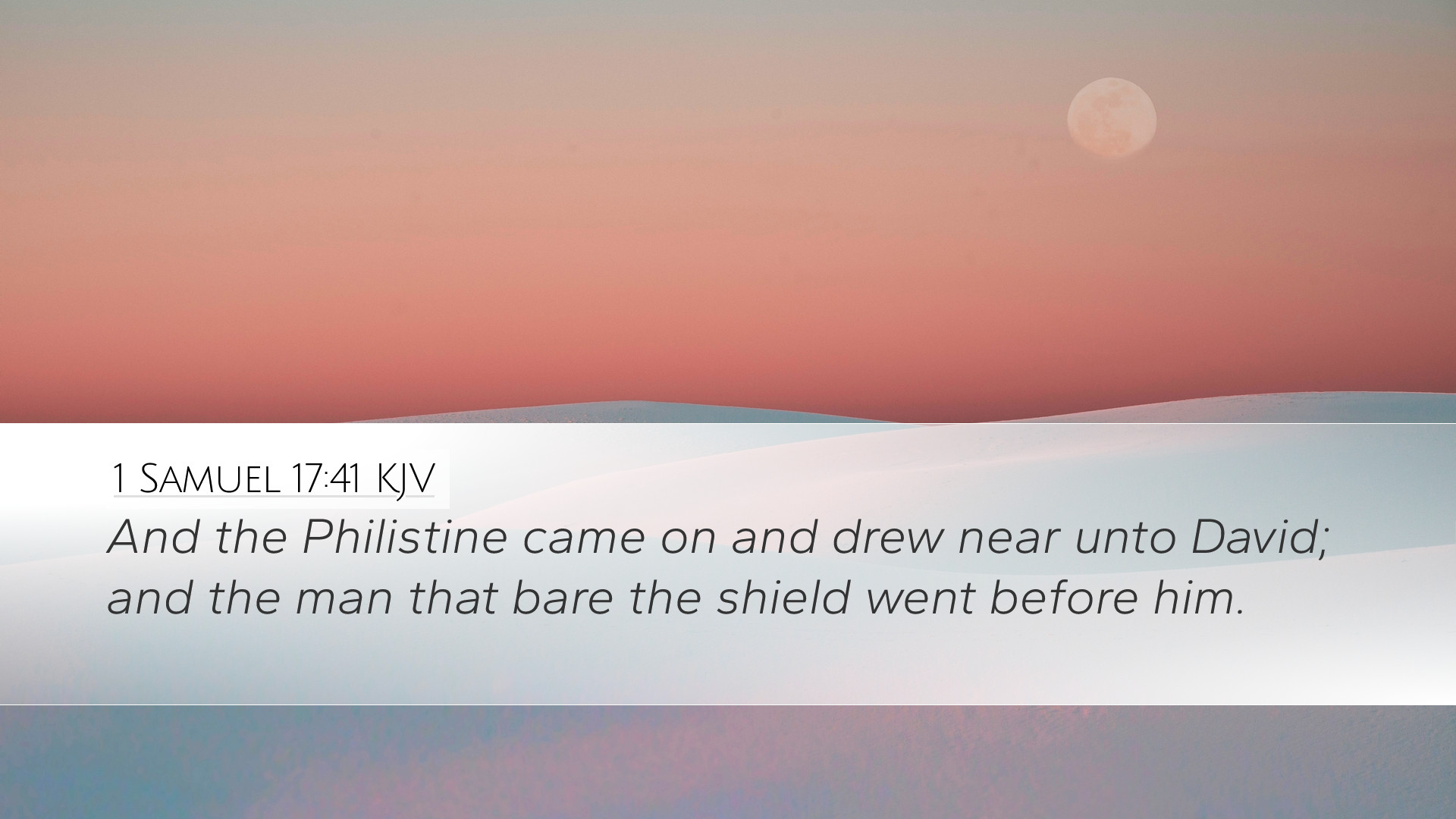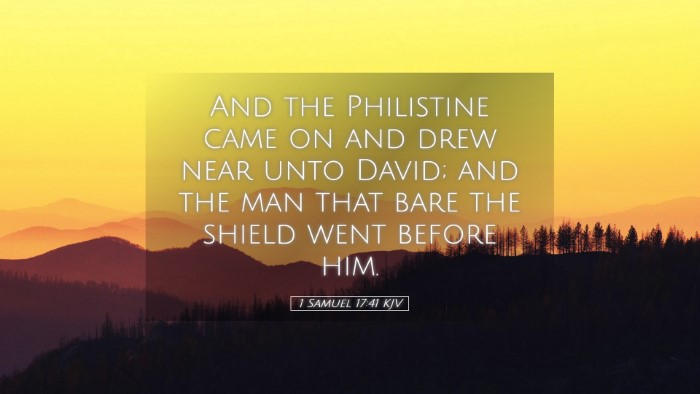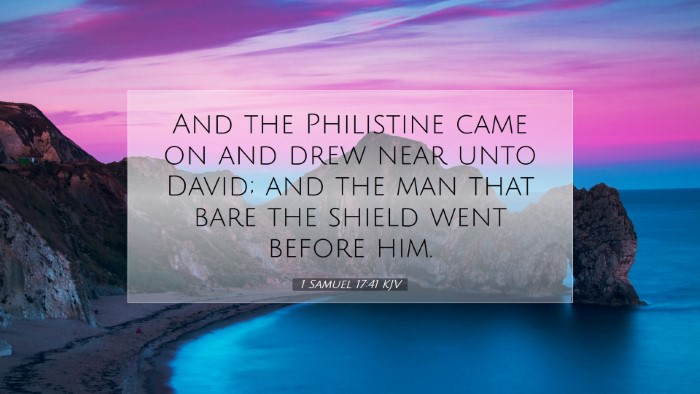Commentary on 1 Samuel 17:41
Verse: "And the Philistine came on and drew near unto David; and the man that bare the shield went before him."
Introduction
This verse is critical within the narrative of David and Goliath, encapsulating the tension of the impending battle. Goliath, the giant, representing the Philistine threat, approaches David, a young shepherd boy, underscoring the stark contrast between the two combatants. This commentary aims to delve into insights from notable public domain scholars, including Matthew Henry, Albert Barnes, and Adam Clarke.
Contextual Analysis
Before examining the verse, we must consider its context. The events unfold in a time of conflict between Israel and the Philistines. Goliath, a champion of the latter, epitomizes fear and oppression that had enveloped the Israelite camp. David, previously anointed by Samuel, enters the scene, embodying faith and reliance on God amidst overwhelming odds.
Matthew Henry's Insights
Matthew Henry reflects on the nature of Goliath's approach. He notes that Goliath draws near, not merely as a combatant but as a figure of defiance against the God of Israel. Henry highlights the psychological warfare evident in Goliath’s stature and the accompanying shield bearer, signaling an attempt to intimidate the Israelites before physical combat even begins.
- Defiance against God: Henry emphasizes that Goliath's advance is not just a physical challenge but a spiritual one, seeking to undermine David's and Israel's faith in God.
- Intimidation Tactics: The presence of the shield bearer symbolizes the might of the Philistines and the strategic positioning meant to instill fear among the Israelites.
Albert Barnes' Commentary
Albert Barnes provides a detailed observation of the text, noting the roles of both Goliath and his shield bearer. He draws attention to the fierce pride of the Philistines and Goliath's role as their representative champion. Barnes argues that the inclusion of the shield bearer serves to emphasize Goliath's considerable might, as he is not alone in the fight but is supported by formidable forces.
- Representational Champion: Barnes points out that Goliath represents the entire Philistine army, demonstrating that this battle is not just a duel but a clash of national significance.
- David's Courage: Contrasting Goliath with David, Barnes highlights David's reliance on divine strength rather than physical prowess, illustrating the theme of faith overcoming seemingly insurmountable obstacles.
Adam Clarke's Analysis
Adam Clarke expands on the physical description of Goliath and the implications of his actions. He notes that the detailed portrayal of Goliath in the subsequent verses enhances the gravity of the situation. Clarke emphasizes that Goliath's assuredness in approaching David is indicative of his authority and overwhelming confidence in his own might.
- Symbolism of the Shield Bearer: Clarke states that the shield bearer not only serves to magnify Goliath's stature but also symbolizes the strength of the Philistine warriors behind him, reflecting the broader military confidence.
- Divine Encounter: The environment surrounding this confrontation is divinely charged, as God’s plan unfolds through David, suggesting that external appearances of strength can be deceptive when faced with faith.
Theological Implications
The encounter signifies a deeper spiritual battle between faith and fear, God’s authority versus human might. This clash serves as a reminder to believers of the power of faith in confronting life’s giants.
- Faith in Adversity: David’s confidence, stemming from his past experiences of relying on God, underscores a vital lesson for individuals facing personal giants, encouraging reliance on God rather than mere human strength.
- God's Sovereignty: The verse establishes that regardless of outward appearances, God orchestrates events to fulfill His divine purposes, assuring believers that victory is possible through Him.
Application for Pastors and Theologians
This verse offers rich material for preaching and teaching, emphasizing God’s promise to empower the faithful despite daunting circumstances.
- Preaching Faith: Pastors can encourage congregations to embrace challenges by remembering God's past deliverances in their lives.
- Teaching Resilience: The story can serve as a foundation for discussions on resilience, emphasizing the importance of spiritual preparation for facing contemporary giants in personal and communal contexts.
Conclusion
1 Samuel 17:41 serves as a poignant reminder of the overarching theme of faith’s triumph over fear, showcasing God's power in juxtaposition to human might. Through insights gathered from respected commentators, a multifaceted understanding of this pivotal moment reflects not only on the historical narrative but also on its application to contemporary faith journeys.


